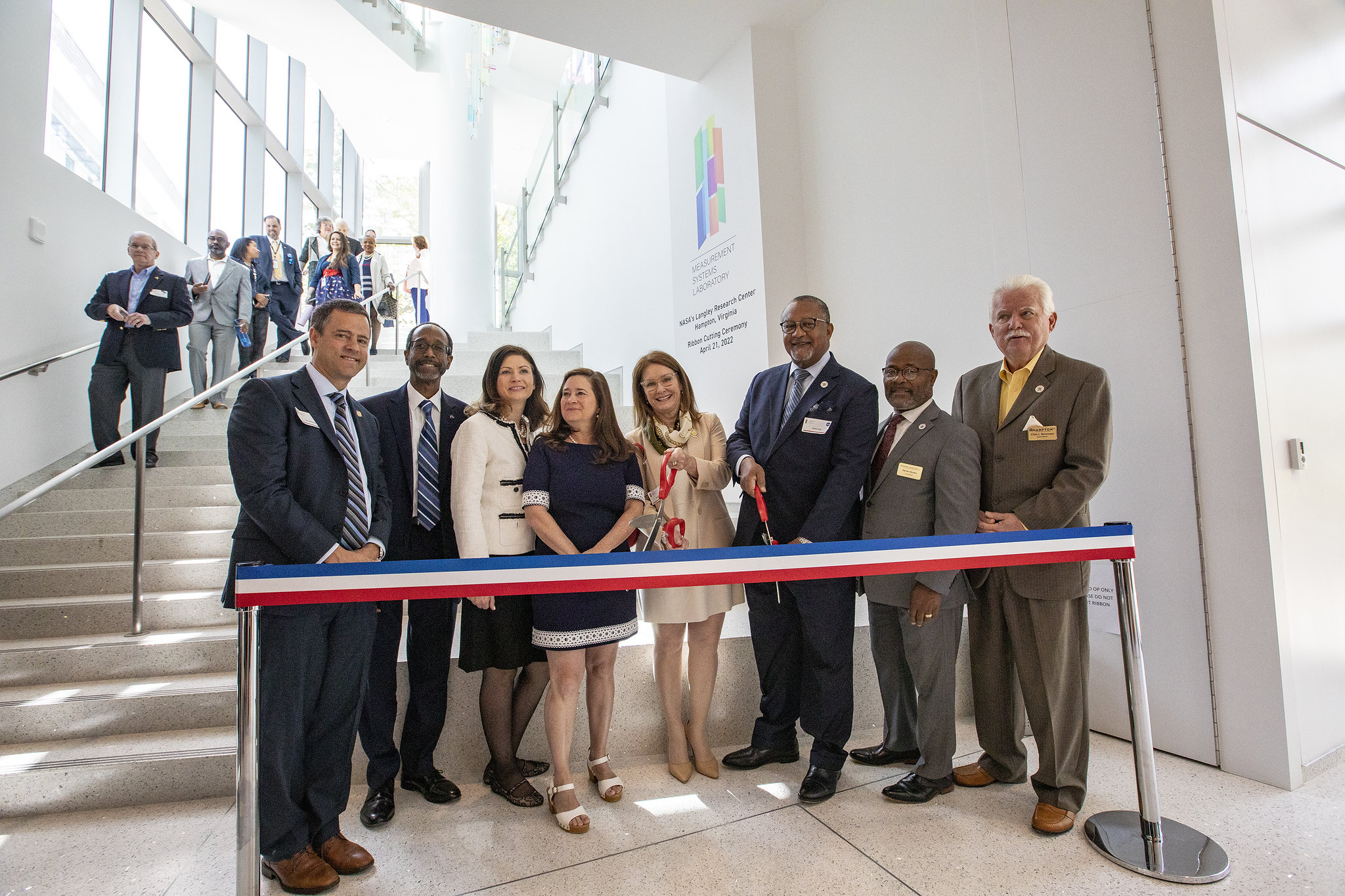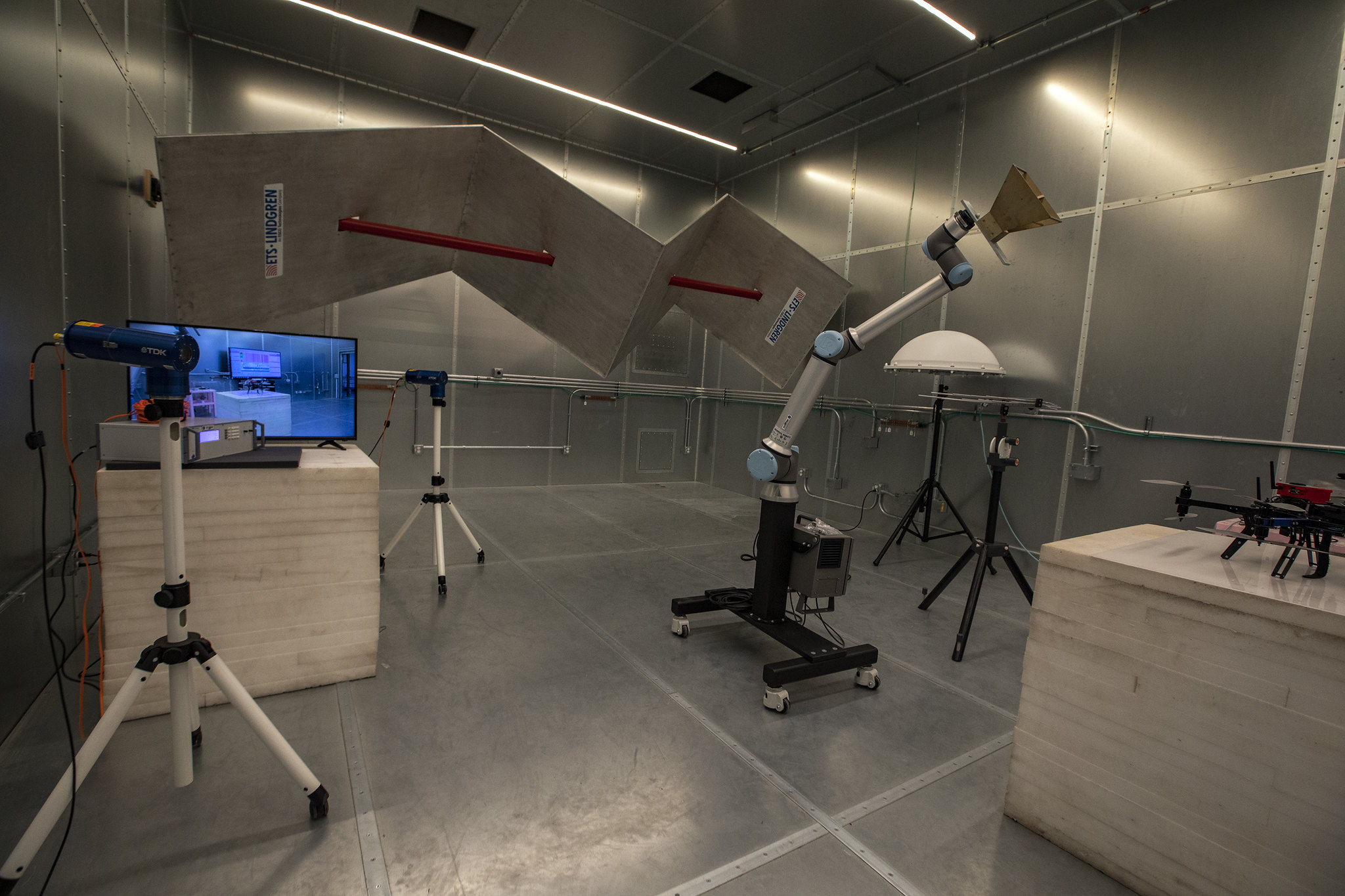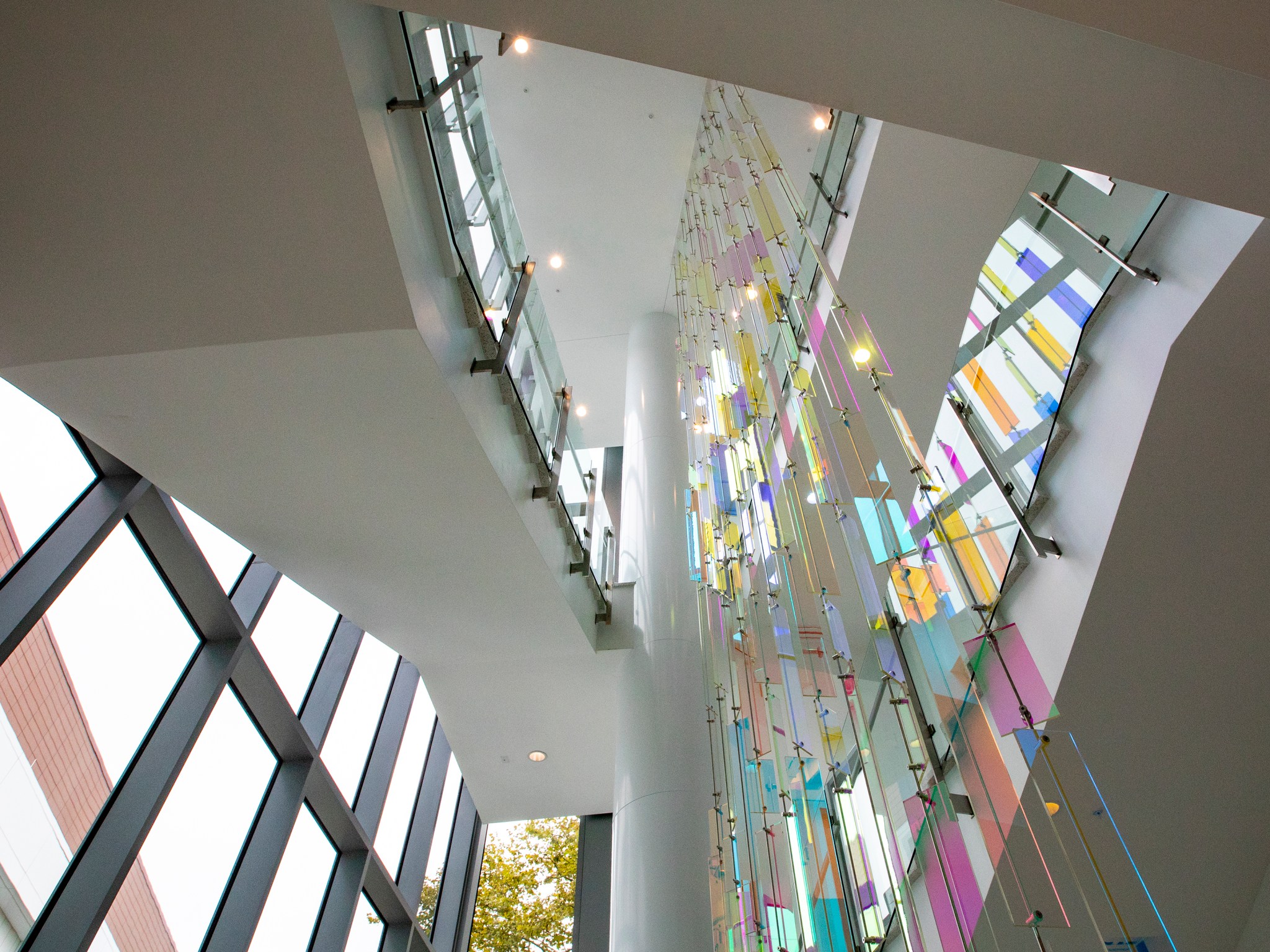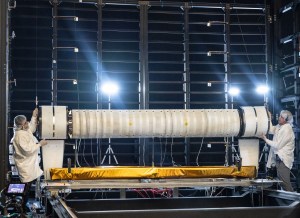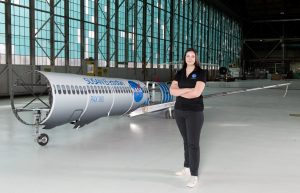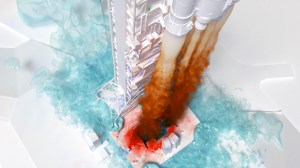NASA’s Langley Research Center in Hampton, Virginia, unveiled their newest addition to its 20-year revitalization plan, the Measurement System Laboratory (MSL), Thursday, Apr. 21 during a ribbon-cutting ceremony.
NASA’s Langley Research Center in Hampton, Virginia, unveiled their newest addition to its 20-year revitalization plan, the Measurement System Laboratory (MSL), Thursday, Apr. 21 during a ribbon-cutting ceremony.
The MSL is a 175,000-square-foot, five-story laboratory containing 40 state-of-the-art research labs and workspace for 245 people for developing, testing, and implementing new sensor and instrument technologies.
Serving as the primary research and development facility for multiple NASA focus areas, the goal of the MSL is to enable the agency in achieving its missions in space exploration, science, and aeronautics with a flexible, modular design that utilizes shared facilities and capability with an emphasis on collaboration.
“Langley Research Center is once again leading NASA into a new exciting era where the public and private sectors will work closely to shape new ideas in our space,” said U.S. Rep. Bobby Scott. “The MSL is helping Langley evolve into a space where business and industry can come for solutions that will make life better for all.”
Capabilities
Inside this facility, researchers will develop more powerful and capable lidars. A focus at Langley for decades, lidar is a type of instrument that uses laser light to make measurements in the same way radar uses radio waves. Lidar instruments on aircraft and on orbiting satellites provide new insights into Earth’s atmosphere. New lidar instruments also promise to offer instant navigation readings to help with everything from self-driving cars autonomous aircraft to augmented reality applications for use on Earth, on the Moon and beyond. The building’s fifth-floor research deck was also designed to allow lidars to reach distant targets for long-range testing and calibration.
Other work at the MSL includes advanced optics, flight software and electronics development needed for new sensors and instruments on aircraft and spacecraft.
In addition, researchers will test window materials for spacecraft, conduct antenna research, and do projects related to flight safety, uncrewed aircraft systems, passive remote sensing technology and small satellites.
Researchers in the MSL will also improve NASA’s methods of measuring and modeling aerodynamics and aerothermodynamics. Through careful, safe experiments — including those with nitric oxide laser-induced fluorescence — they will refine computer models and expand understanding of airflow and heating. This work will potentially impact Lunar Landing Simulation experiments, Scramjet fuel-mixing tests and wind tunnel tests of Langley’s inflatable heatshield technologies.
“MSL enables us to continue our rich legacy of contributions and innovations,” said Clayton Turner, director of NASA Langley. “We stand on the shoulders of giants, hidden figures who are no longer hidden in our past, and modern figures that are charting our future.”
Some projects and initiatives the MSL will support
- Low-Earth Orbit Flight Test of an Inflatable Decelerator
- ARCSTONE Calibration of Lunar Spectral Reflectance
- Navigation Doppler Lidar and the surface topography flash Lidar
- High Spectral Resolution Lidar development for space
- Wind lidar
- Learn-to-Fly
- Electrified Powertrain Flight Demonstration
- Widespread sensing of weather/traffic/radio environments for Advanced Air Mobility vertiport and Smart Center initiatives such as High Density Vertiplex, System Wide Safety, and Convergent Aeronautics Solutions
Going Green
In January 2022, the U.S. Green Building Council awarded the Measurement Systems Laboratory a Leadership in Energy and Environmental Design for New Construction (LEED-NC) Gold certification. LEED is the largest green building rating system in the world and provides a framework for healthy, highly efficient, and cost-saving green buildings. The program is designed to save operating and maintenance costs, improve building efficiency, lower carbon emissions, address climate changes, and create healthier places for tenants and visitors.
“The celebration would not be complete without recognizing the LEED new construction gold certification the building achieved,” said Joanna Rosato, acting regional manager for the General Services Administration. “If I may borrow your words – a great leap starts with just one idea, and NASA Langley is where ideas take flight.”
The construction of the floors in the labs is unique. They were made with a high-compressive-strength reinforced concrete. They were built to strict requirements for flatness and levelness which is helpful with laser work. The concrete floors were also designed to reduce vibration which helps in making accurate measurements. Also, the floors in much of the building have copper signal reference grounding (SRG) mesh that’s useful with electronics work.
Design touches in the building include colorful dichroic glass installations which are seen through windows on two sides of the building — as well as in the monumental staircase. They visually represent research that happens within the labs, where teams build and test sensors and instruments that make measurements by analyzing properties of light.
“While I toured the MSL earlier, I was struck by the facility’s emphasis on collaboration,” said Jimmy Grey, vice mayor of the city of Hampton. “This is a great strength of NASA Langley and we are pleased to have that collaboration between the city and NASA Langley and that it continues to be strong.”
With this facility, NASA Langley and Hampton Roads solidifies its position as a premiere location for research, development, and testing. The MSL’s design of efficiency, adaptability, and durability will ensure the laboratory will remain an innovation hub for decades to come.

























